
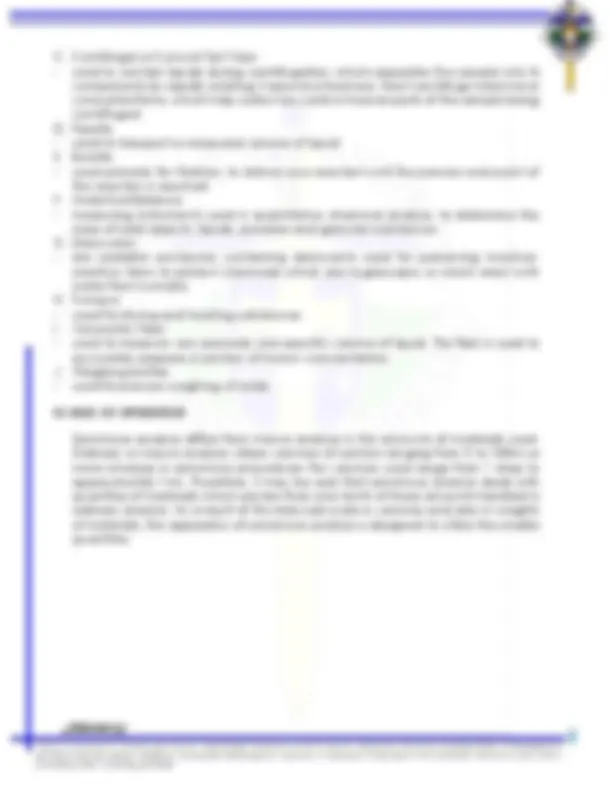
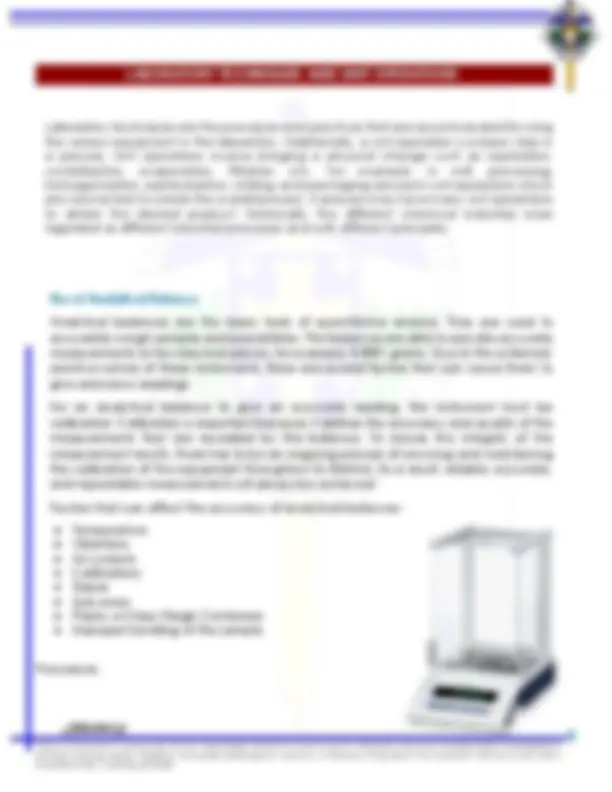
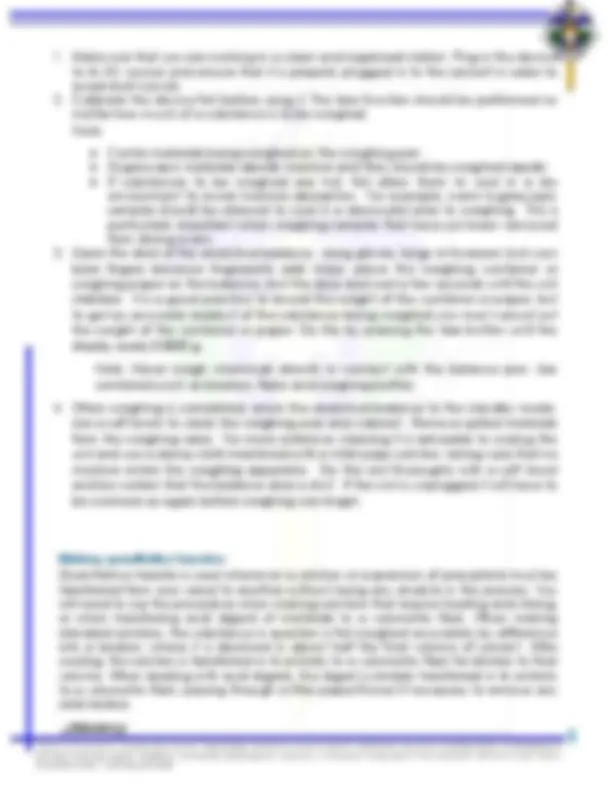
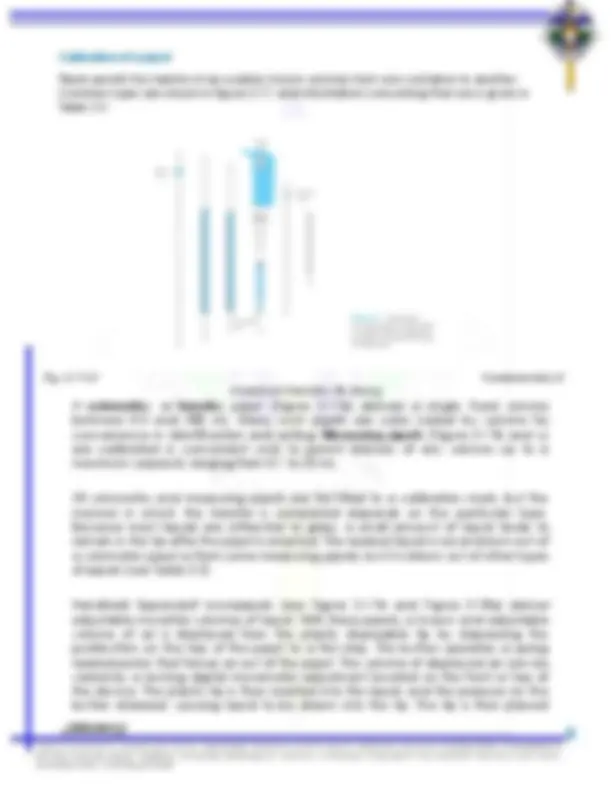
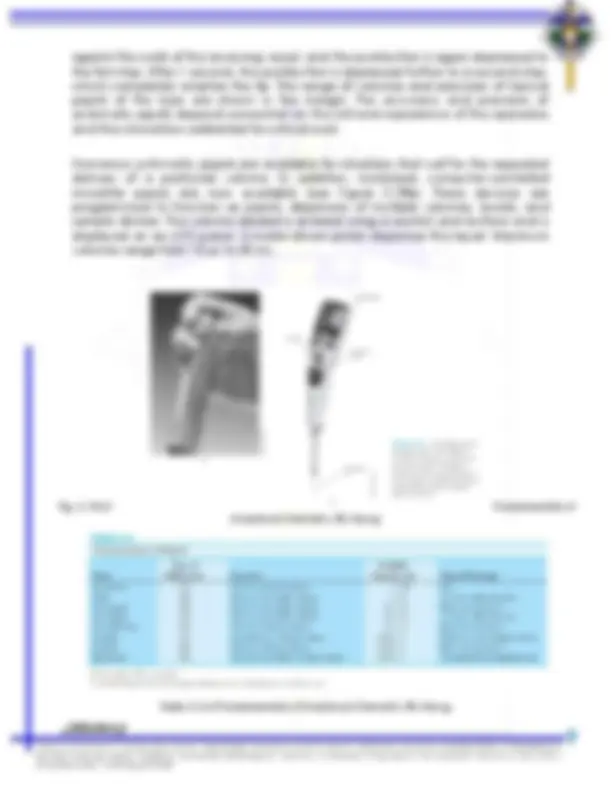
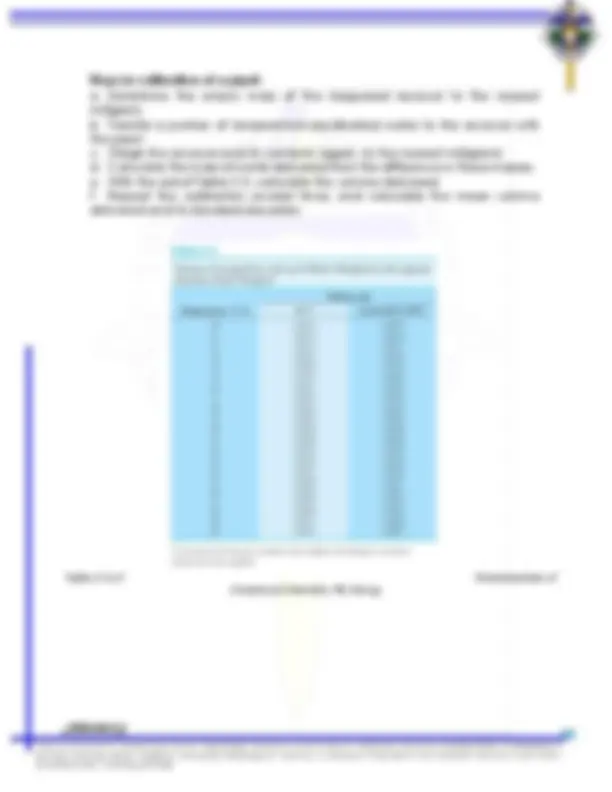
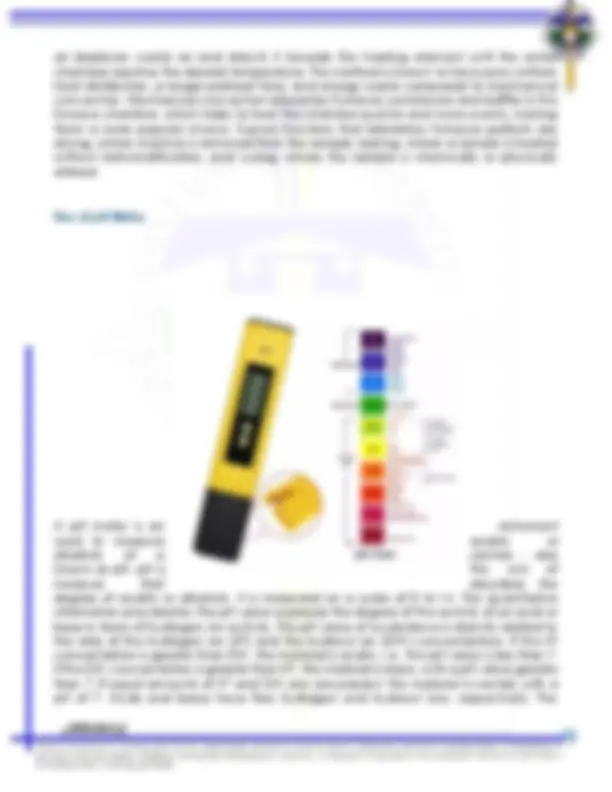
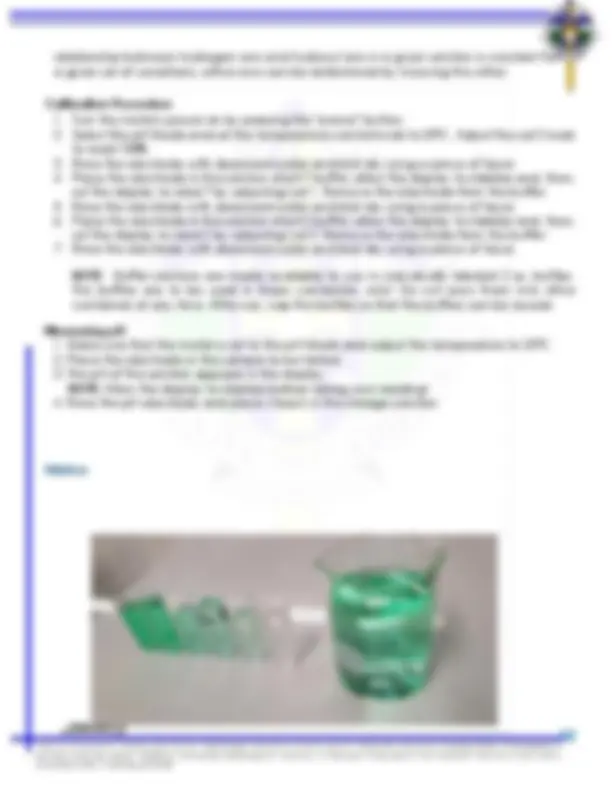
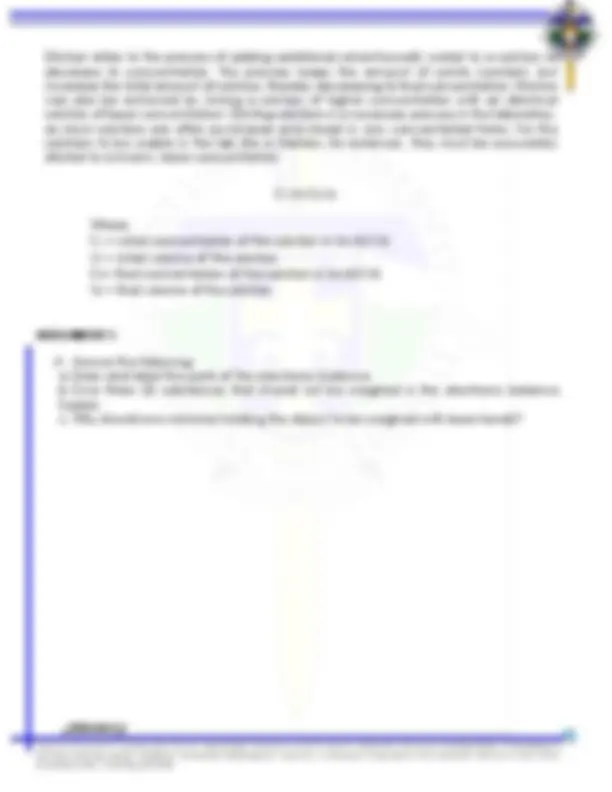
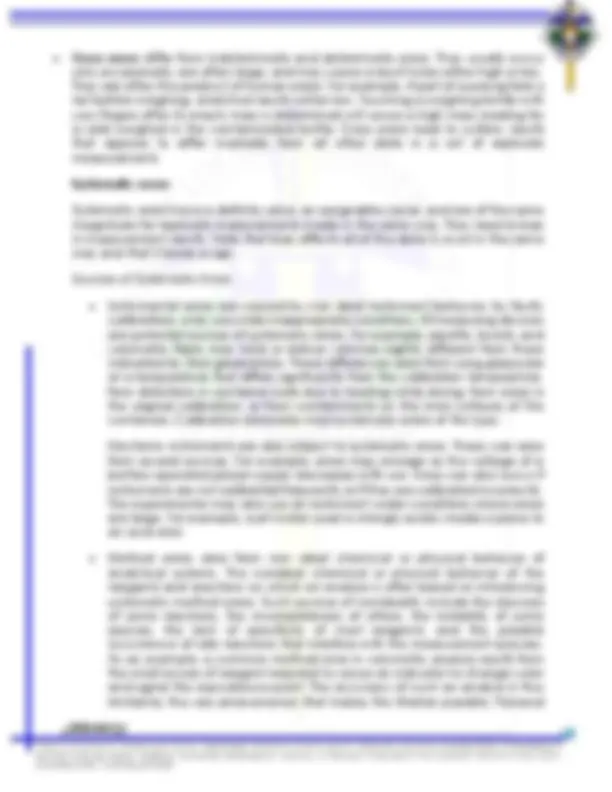
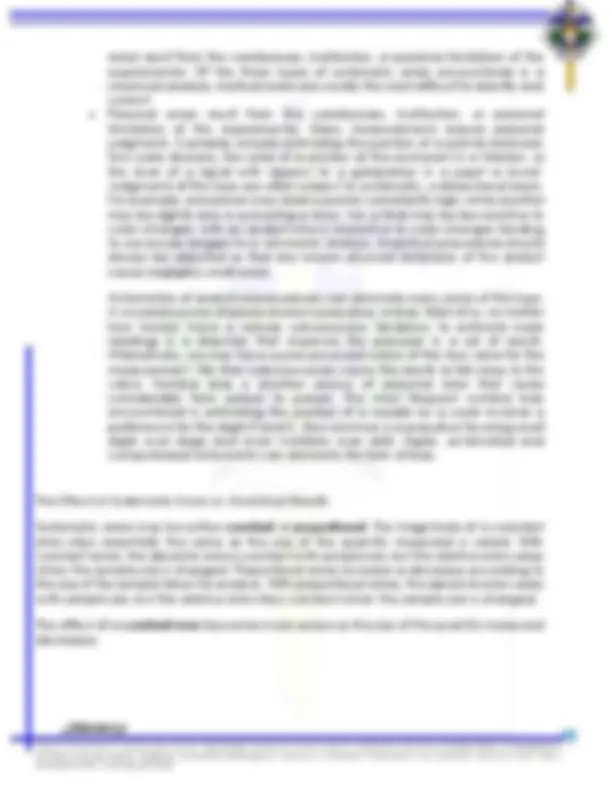
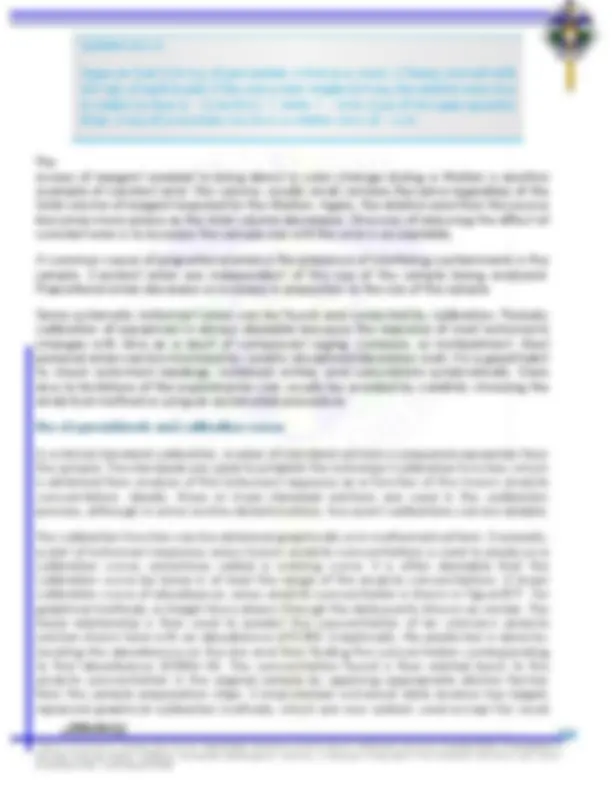
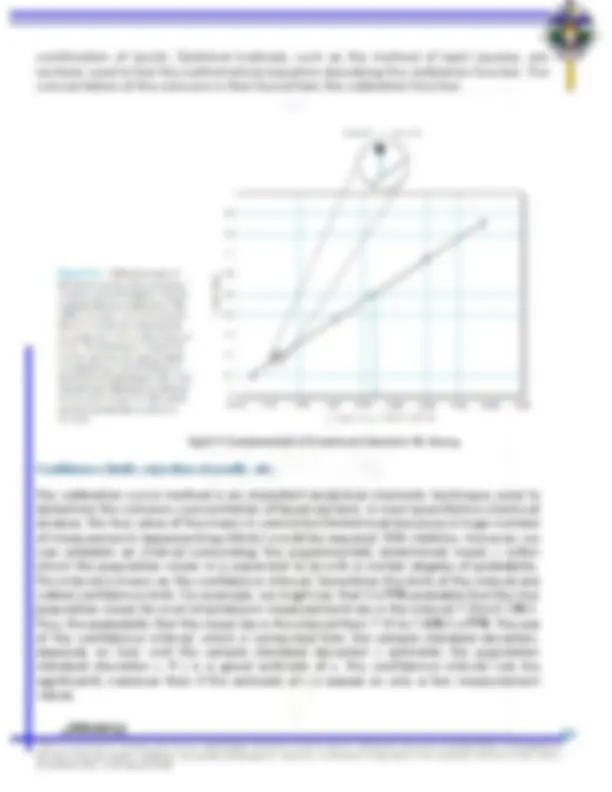
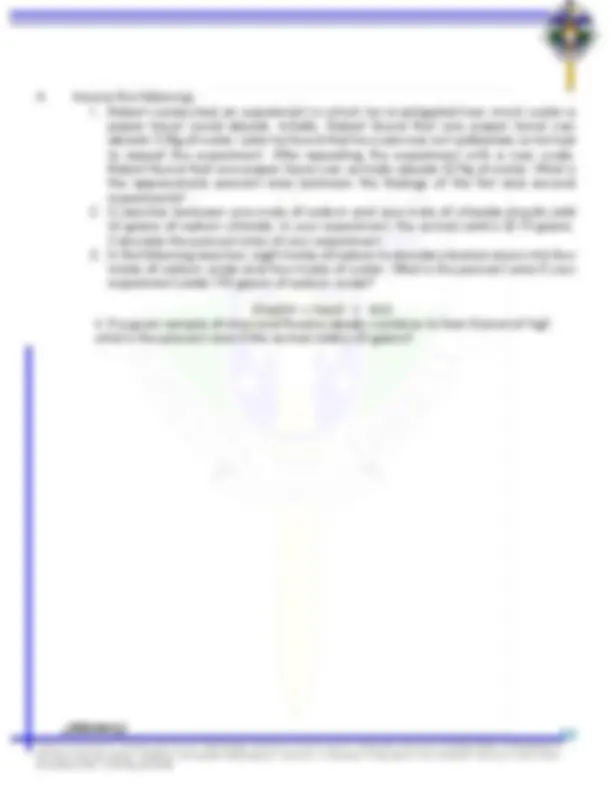

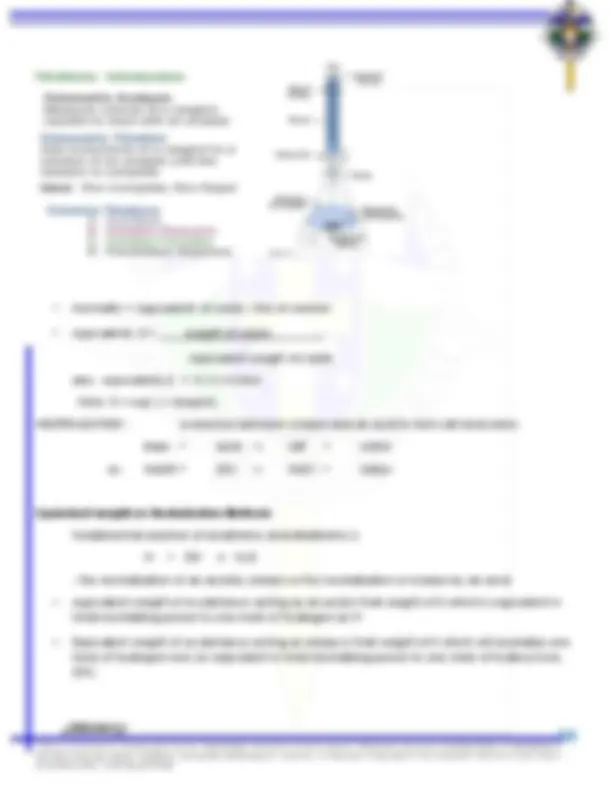
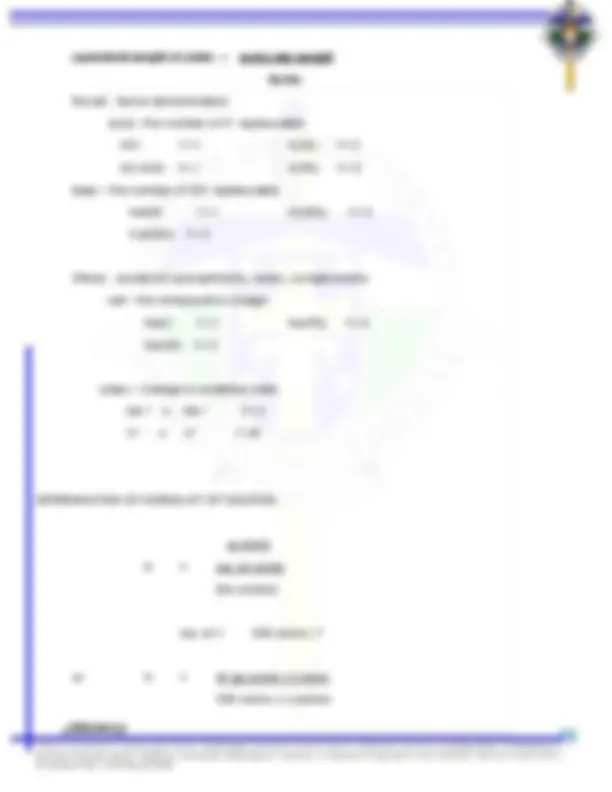
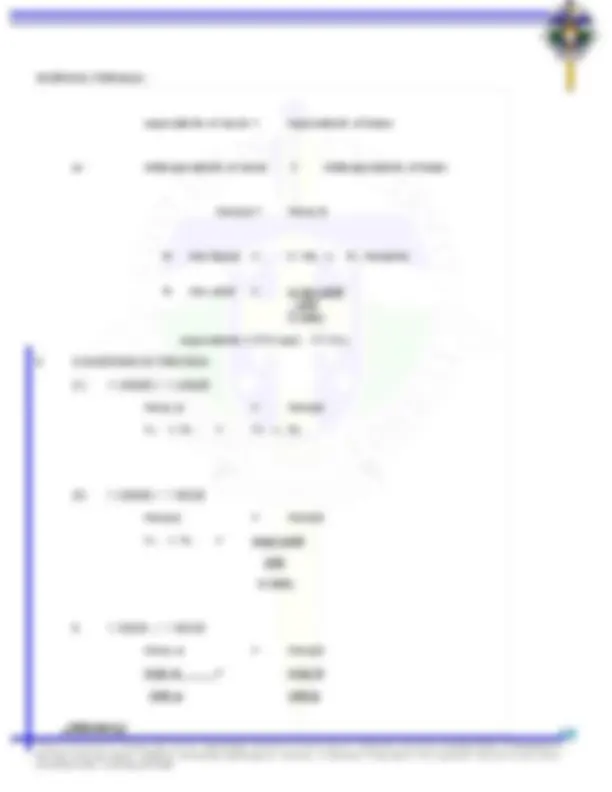
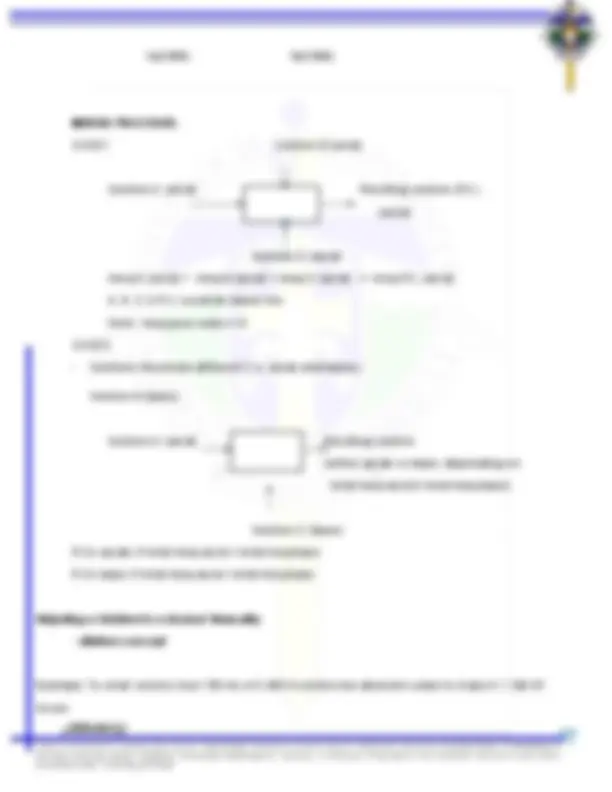
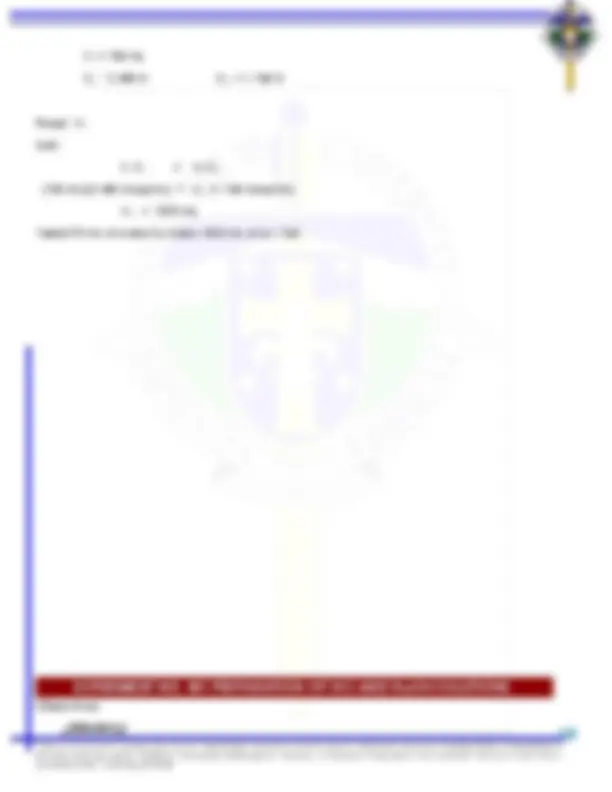
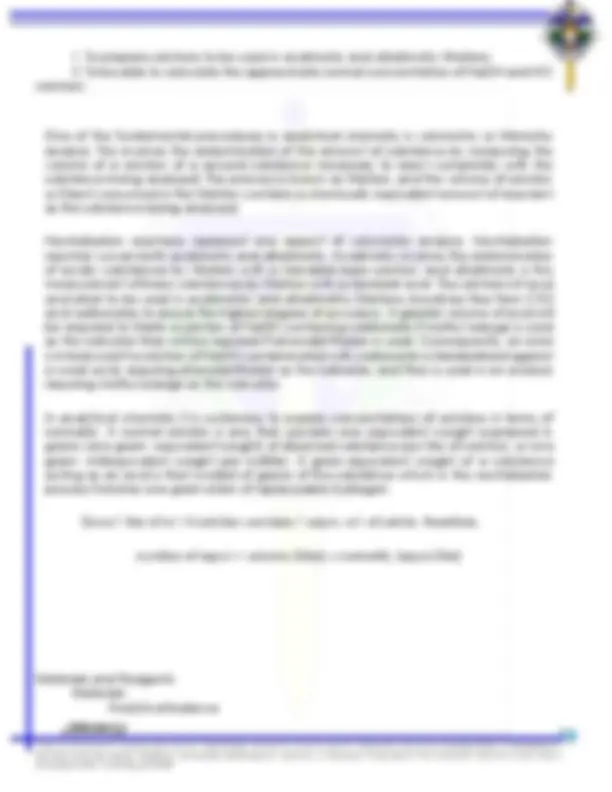
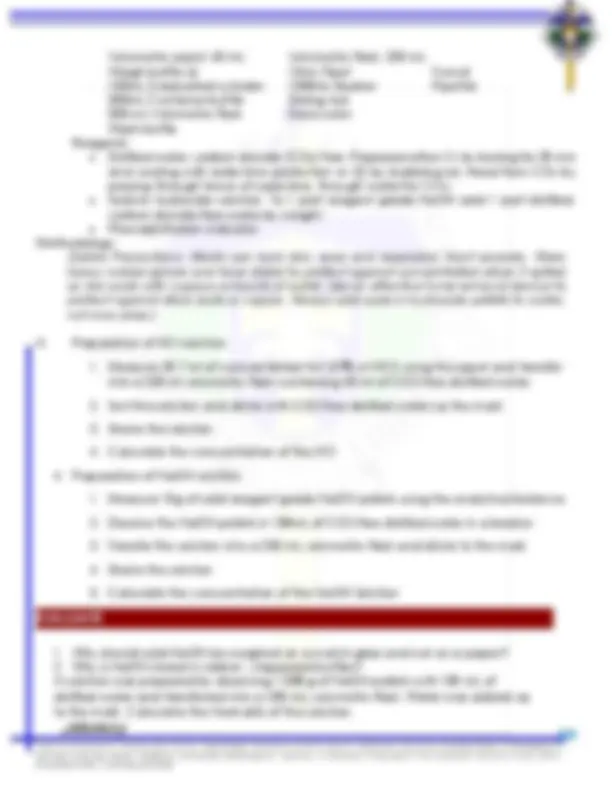
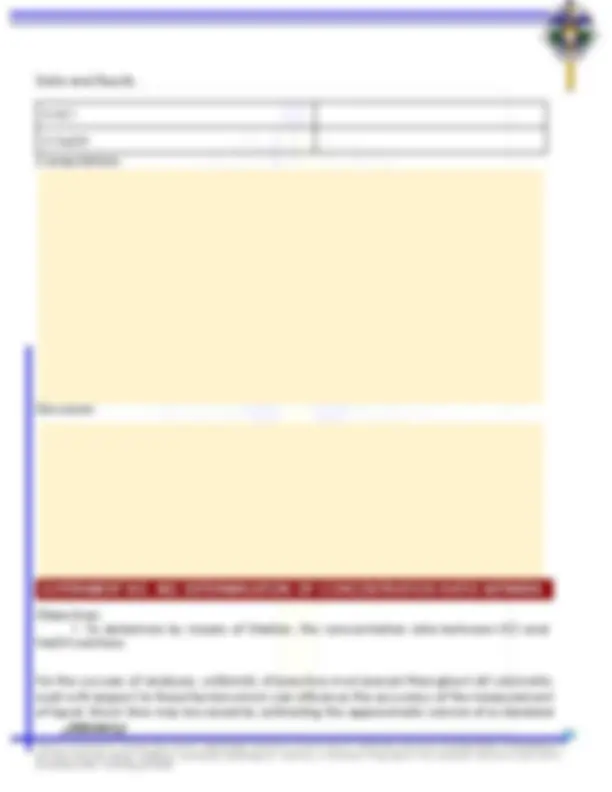
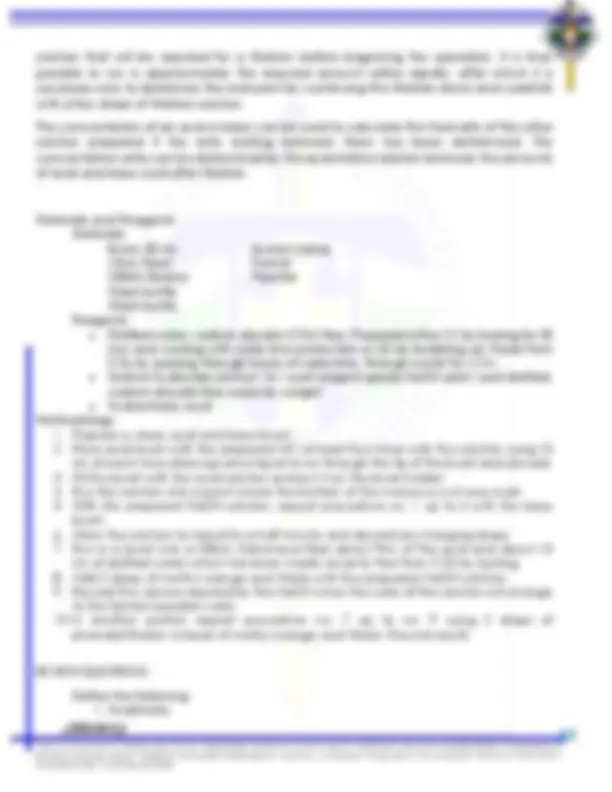
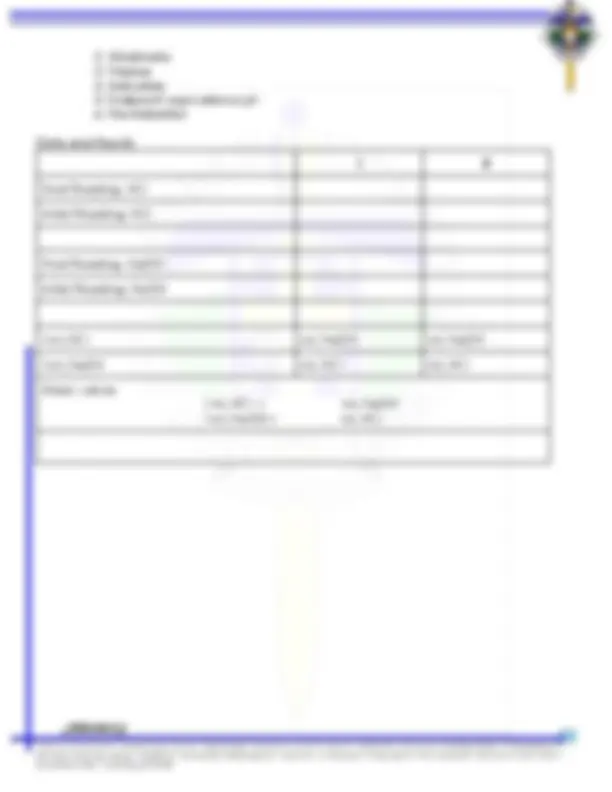
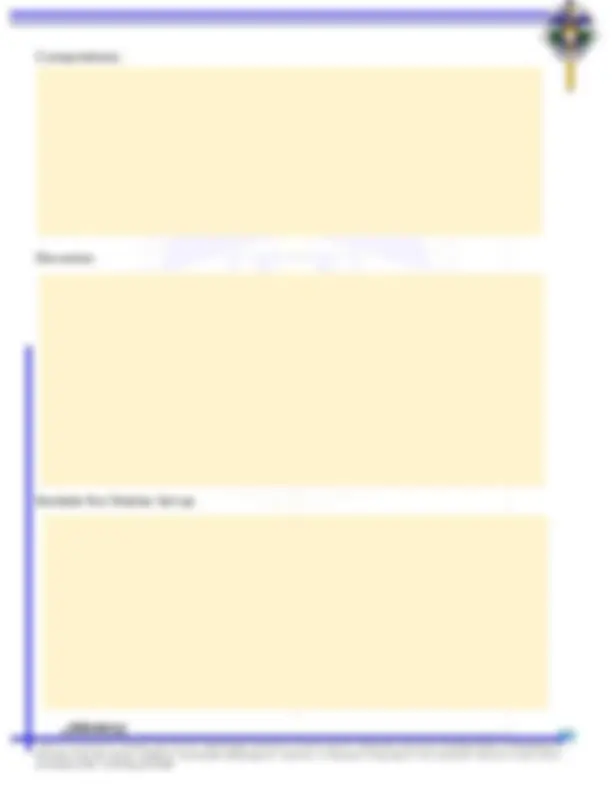
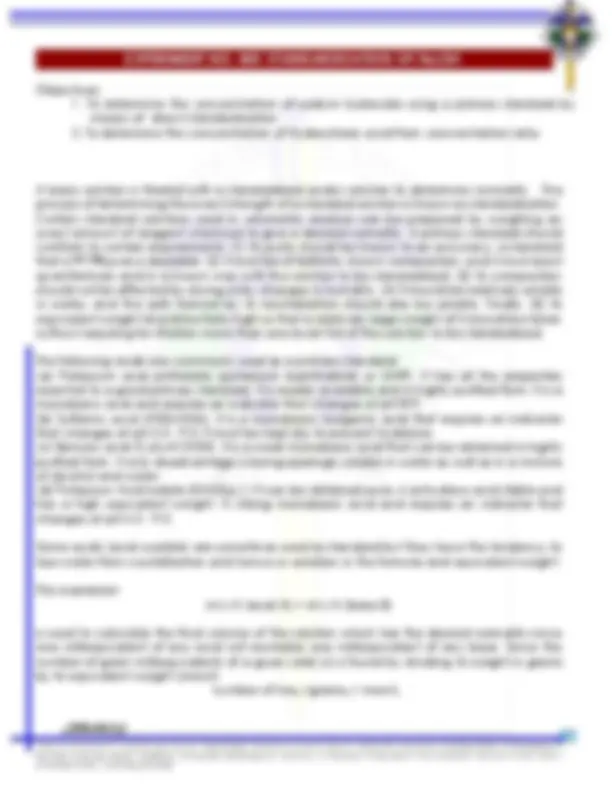
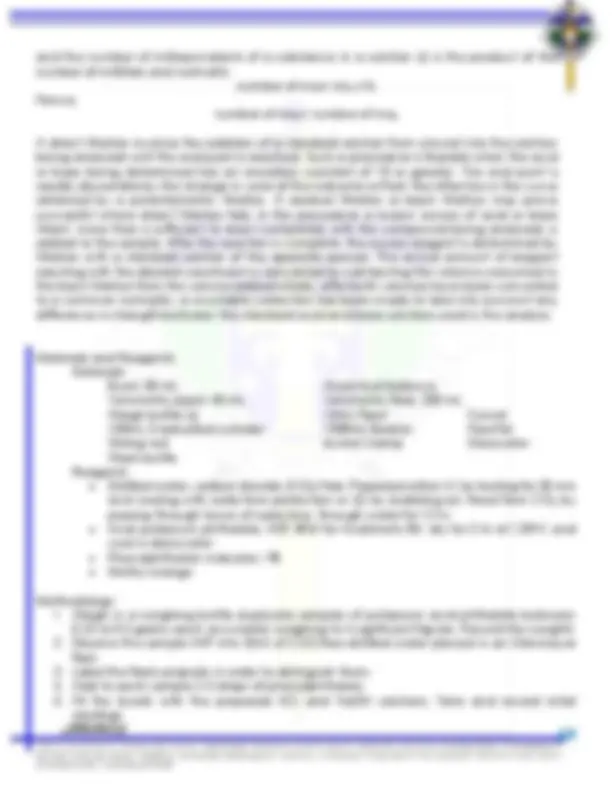
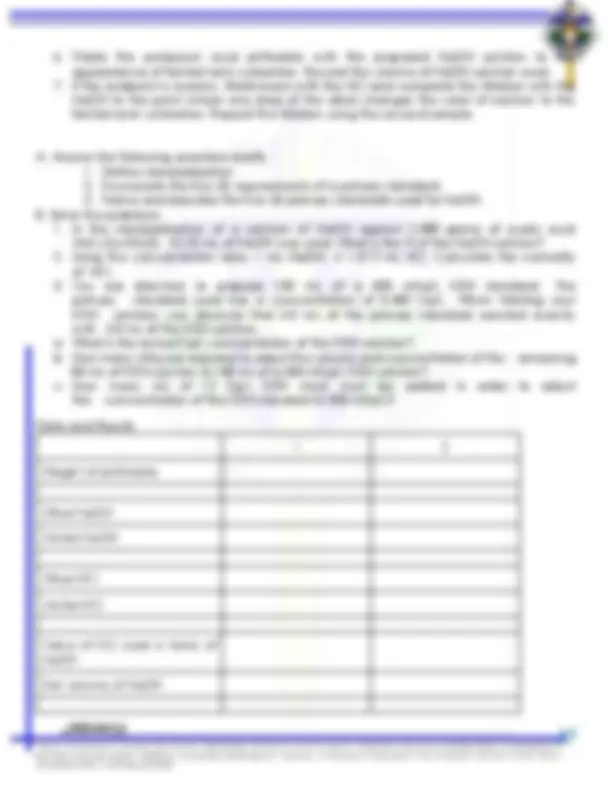
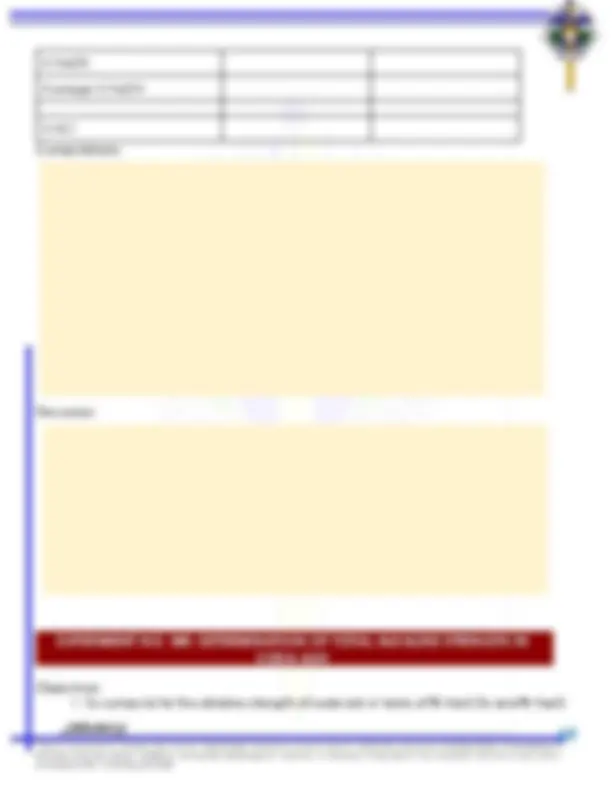
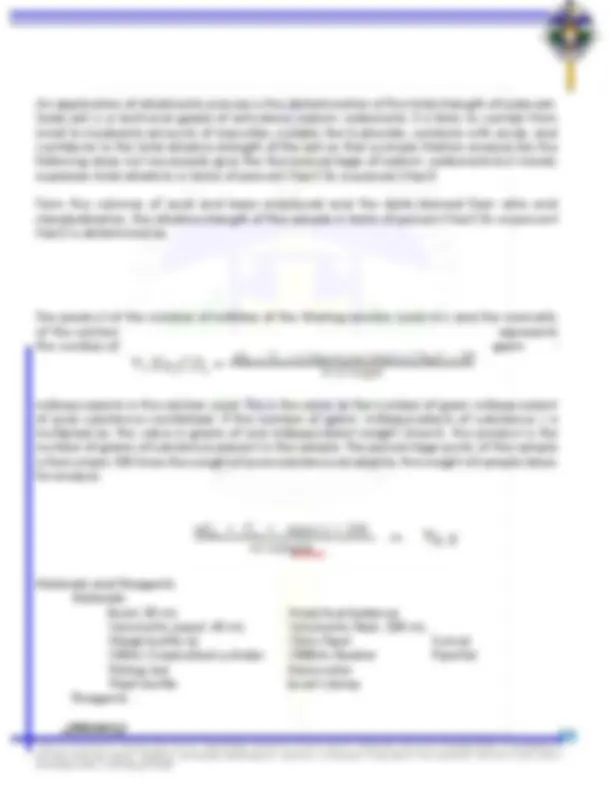
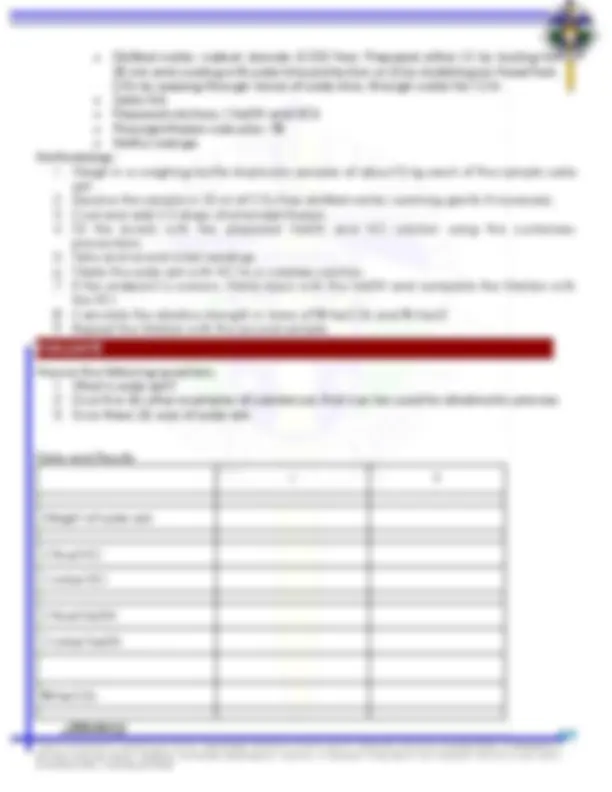
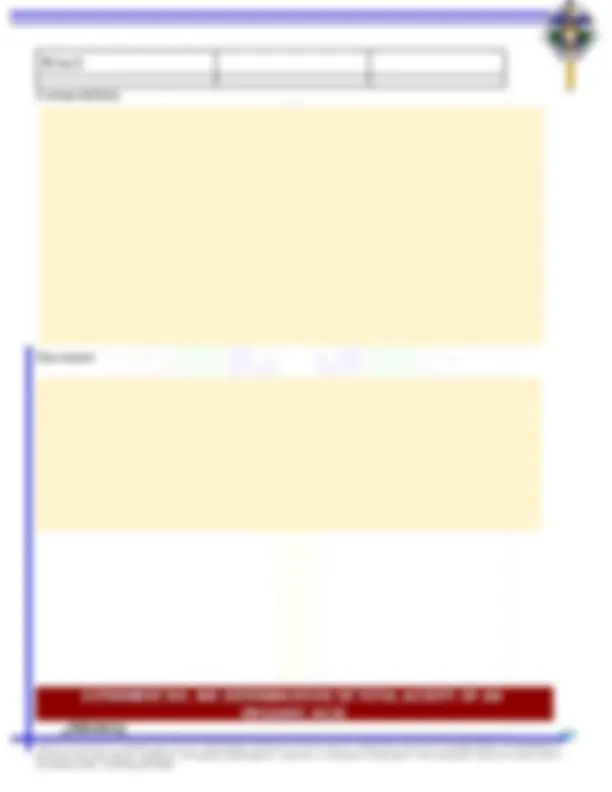
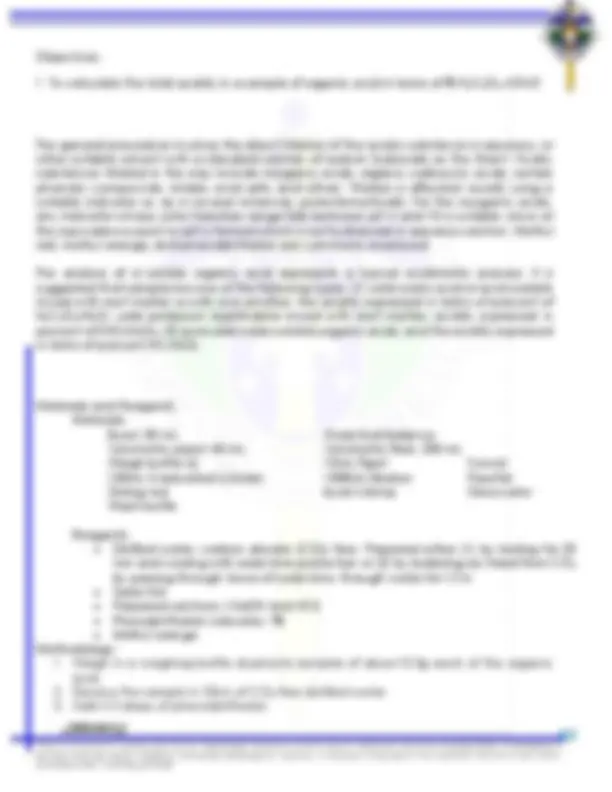
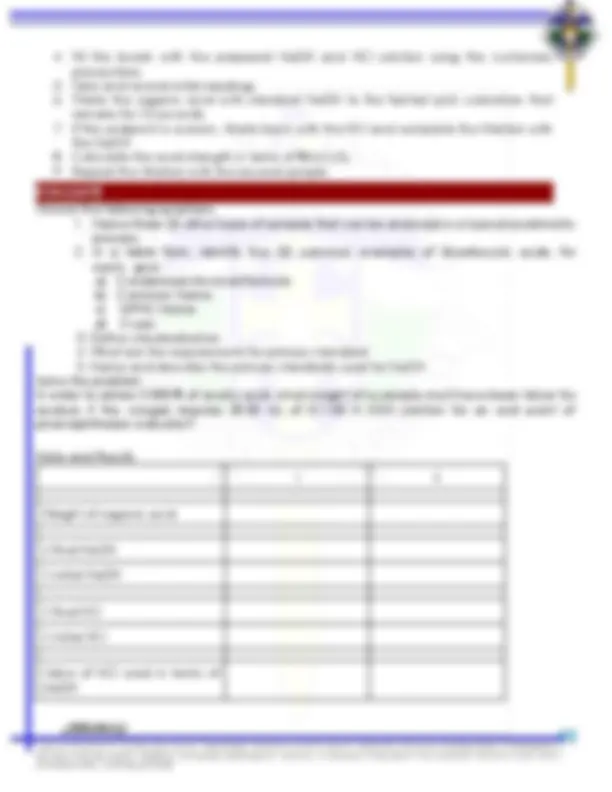
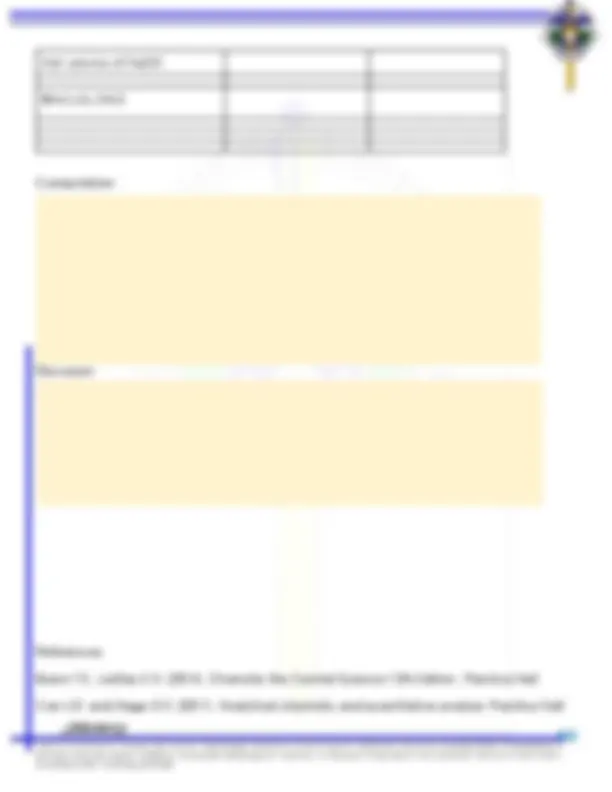
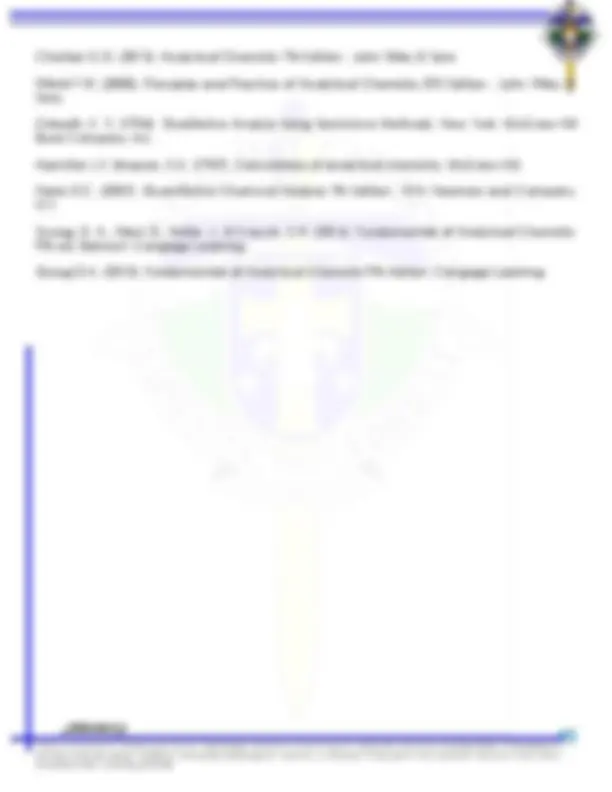


Study with the several resources on Docsity

Earn points by helping other students or get them with a premium plan


Prepare for your exams
Study with the several resources on Docsity

Earn points to download
Earn points by helping other students or get them with a premium plan
Community
Ask the community for help and clear up your study doubts
Discover the best universities in your country according to Docsity users
Free resources
Download our free guides on studying techniques, anxiety management strategies, and thesis advice from Docsity tutors
analytical chemistry experiments handouts
Typology: Summaries
1 / 45

This page cannot be seen from the preview
Don't miss anything!






































A. Volumetric Analysis - measures the volume of a standard reacting reagent with the desired constituent in a definite chemical reaction. This is commonly known as “TITRATION” B. Gravimetric Analysis - based entirely upon weight, the original substance is weighed and from it the constituent to be determined is isolated as an element or as a compound of definite composition C. Colorimetric Method - the substance to be determined is converted to some compound which imparts to its solution a distinct color, the intensity of which varies in proportion to the amount of a compound in a solution D. Other physicochemical Methods - quantities of constituents from measurements of such properties as the turbidity od suspensions of semi colloidal precipitate E. Gas Volumetric Methods - determination of mixture of gases VOLUMETRIC ANALYSIS Divisions A. Neutralization methods - acidimetry (acid determination) and alkalimetry (alkali determination B. Oxidation and Reduction - “redox” - oxidimetry and reductimetry C. Precipitation methods - precipitimetry D. Complex formation methods - complexometry DEFINITION OF TERMS ● Titration - determination of the concentration (unknown) of a solution by the gradual addition of a standard (known) solution ● Titrant - solution of known concentration (reagent solution) ● Analyte - substance under study (substance being titrated) ● Standard solution - solution whose concentration is accurately known a. Standard acid solutions - HCl, HNO 3 , H 2 SO 4 , H 2 C 2 O 4 b. Standard alkali solutions - NaOH, KOH, Ba(OH) 2 ● Standardization - process of determining the exact concentration of a titrant ● Primary standard - a substance of highest purity used for standardization a. Characteristics: highest purity, soluble in water, stable towards air, high temperature and humidity Example: potassium hydrogen phthalate(KHP) or KHC 8 H 4 O 4 , sodium carbonate, sulfuric acid
● Indicator - a substance (colored dye) that is sensitive hydrogen ion concentration, changes in color once the endpoint is reached (from acidity to alkalinity and vice versa) Example: phenolphthalein, methyl orange, congo red, bromocresol green, litmus paper ● Endpoint - point in titration where the color of the indicator changes which coincides with the EQUIVALENCE POINT ● Equivalence point - the point in titration in which the chemical reaction is completed or the point of complete neutralization. This is the point where the acid and the base added in amounts are equivalent to each other ● Acidimetry - an acidic substance is titrated with a standard solution of an alkali ● Alkalimetry - basic substance is titrated with a standard solution of an acid ● Normality - equivalents of solute/ Liter of solution ● Neutralization - a reaction between a base and an acid to form salt and water ● Precision - refers to how closely repeated measurements of the same quantity come to each other ● Accuracy - refers to how closely an experimental observation agree with the true or correct value REAGENTS A. Technical or Commercial Grade
Laboratory techniques are the processes and practices that are recommended for using the various equipment in the laboratory. Additionally, a unit operation is a basic step in a process. Unit operations involve bringing a physical change such as separation, crystallization, evaporation, filtration etc. For example, in milk processing, homogenization, pasteurization, chilling, and packaging are each unit operations which are connected to create the overall process. A process may have many unit operations to obtain the desired product. Historically, the different chemical industries were regarded as different industrial processes and with different principles. Use of Analytical Balance Analytical balances are the basic tools of quantitative analysis. They are used to accurately weigh samples and precipitates. The balances are able to provide accurate measurements to four decimal places, for example, 0.0001 grams. Due to the extremely sensitive nature of these instruments, there are several factors that can cause them to give erroneous readings. For an analytical balance to give an accurate reading, the instrument must be calibrated. Calibration is important because it defines the accuracy and quality of the measurements that are recorded by the balance. To ensure the integrity of the measurement results, there has to be an ongoing process of servicing and maintaining the calibration of the equipment throughout its lifetime. As a result, reliable, accurate, and repeatable measurements will always be achieved. Factors that can affect the accuracy of analytical balances: ● Temperature ● Vibrations ● Air currents ● Calibrations ● Slopes ● User errors ● Plastic or Glass Weigh Containers ● Improper handling of the sample Procedure:
Delivering an aliquot An aliquot is a measured fraction of the volume of a liquid sample. Fig. 2-22 of Fundamentals of Analytical Chemistry 9E, Skoog Steps in dispensing an aliquot: a. Draw a small amount of the liquid into the pipet and b. wet the interior surface of the glass by tilting and rotating the pipet. Repeat this procedure two more times. Then draw liquid into the pipet so that the level is a few centimeters above the line etched on the stem of the pipet. While holding the tip of the pipet against the inside surface of the volumetric flask c. allow the liquid level to descend until the bottom of the meniscus is aligned with the line d. Remove the pipet from the volumetric flask, e. tilt it until liquid is drawn slightly up into the pipet, and wipe the tip with a lintless tissue as shown. Then while holding the pipet vertically, f. allow the liquid to flow into the receiving flask until just a small amount of liquid remains in the inside of the tip and a drop remains on the outside. g. Tilt the flask slightly as shown in , and h. finally, touch the tip of the pipet to the inside of the flask When this step is completed, a small amount of liquid will remain in the pipet. Do not remove this remaining liquid. The pipet is calibrated to reproducibly deliver its rated volume when this liquid remains in the tip. .
Calibration of a pipet Pipets permit the transfer of accurately known volumes from one container to another. Common types are shown in Figure 2-17, and information concerning their use is given in Table 2-2. Fig. 2-17 of Fundamentals of Analytical Chemistry 9E, Skoog A volumetric , or transfer , pipet (Figure 2-17a) delivers a single, fixed volume between 0.5 and 200 mL. Many such pipets are color coded by volume for convenience in identification and sorting. Measuring pipets (Figure 2-17b and c) are calibrated in convenient units to permit delivery of any volume up to a maximum capacity ranging from 0.1 to 25 mL. All volumetric and measuring pipets are first filled to a calibration mark, but the manner in which the transfer is completed depends on the particular type. Because most liquids are attracted to glass, a small amount of liquid tends to remain in the tip after the pipet is emptied. This residual liquid is never blown out of a volumetric pipet or from some measuring pipets, but it is blown out of other types of pipets (see Table 2-2). Handheld Eppendorf micropipets (see Figure 2-17d and Figure 2-18a) deliver adjustable microliter volumes of liquid. With these pipets, a known and adjustable volume of air is displaced from the plastic disposable tip by depressing the pushbutton on the top of the pipet to a first stop. This button operates a spring loaded piston that forces air out of the pipet. The volume of displaced air can be varied by a locking digital micrometer adjustment located on the front or top of the device. The plastic tip is then inserted into the liquid, and the pressure on the button released, causing liquid to be drawn into the tip. The tip is then placed
Steps in calibration of a pipet: a. Determine the empty mass of the stoppered receiver to the nearest milligram. b. Transfer a portion of temperature-equilibrated water to the receiver with the pipet c. Weigh the receiver and its contents (again, to the nearest milligram) d. Calculate the mass of water delivered from the difference in these masses. e. With the aid of Table 2-3, calculate the volume delivered. f. Repeat the calibration several times, and calculate the mean volume delivered and its standard deviation. Table 2-3 of Fundamentals of Analytical Chemistry 9E, Skoog
Reading a Buret Fig. 2-19 of Fundamentals of Analytical Chemistry 9E, Skoog Burets , like measuring pipets, make it possible to deliver any volume up to the maximum capacity of the device. The precision attainable with a buret is substantially greater than the precision with a pipet. A buret consists of a calibrated tube to hold titrant plus a valve arrangement by which the flow of titrant is controlled. This valve is the principal source of difference among burets. The simplest pinchcock valve consists of a close-fitting glass bead inside a short length of rubber tubing that connects the buret and its tip (see Figure 2 - 19a). Only when the tubing is deformed does liquid flow past the bead. A buret equipped with a glass stopcock for a valve relies on a lubricant between the ground-glass surfaces of stopcock and barrel for a liquid-tight seal. Some solutions, notably bases, cause glass stopcocks to freeze when they are in contact with ground glass for long periods. Therefore, glass stopcocks must be thoroughly cleaned after each use. Most burets made in the last several of decades have Teflon® valves, which are unaffected by most common reagents and require no lubricant (see Figure 2-19b). To read a buret:
air displaces cooler air and directs it towards the heating element until the entire chamber reaches the desired temperature. This method is known to have poor uniform heat distribution, a longer preheat time, and energy waste compared to mechanical convection. Mechanical convection laboratory furnaces use blowers and baffles in the furnace chamber, which helps to heat the chamber quicker and more evenly, making them a more popular choice. Typical functions that laboratory furnaces perform are drying, where moisture is removed from the sample, baking, where a sample is heated without dehumidification, and curing, where the sample is chemically or physically altered. Use of pH Meter A pH meter is an instrument used to measure acidity or alkalinity of a solution - also known as pH. pH is the unit of measure that describes the degree of acidity or alkalinity. It is measured on a scale of 0 to 14. The quantitative information provided by the pH value expresses the degree of the activity of an acid or base in terms of hydrogen ion activity. The pH value of a substance is directly related to the ratio of the hydrogen ion [H+] and the hydroxyl ion [OH-] concentrations. If the H+ concentration is greater than OH-, the material is acidic; i.e., the pH value is less than 7. If the OH-^ concentration is greater than H+, the material is basic, with a pH value greater than 7. If equal amounts of H+^ and OH-^ ions are present, the material is neutral, with a pH of 7. Acids and bases have free hydrogen and hydroxyl ions, respectively. The
relationship between hydrogen ions and hydroxyl ions in a given solution is constant for a given set of conditions, either one can be determined by knowing the other. Calibration Procedure
Since analytical chemistry is the science of making quantitative measurements, it is important that raw data is manipulated and reported correctly to give a realistic estimate of the uncertainty in a result. Simple data manipulations may only require keeping track of significant figures .The benefits of standardizing any type of data are ensuring data quality through consistency, to support data integrity and to improve data shareability, i.e., collaborative research. Accuracy, precision, errors, significant figures, rounding off, propagation of errors Precision describes the reproducibility of measurements—in other words, the closeness of results that have been obtained in exactly the same way. Generally, the precision of a measurement is readily determined by simply repeating the measurement on replicate samples. Three terms are widely used to describe the precision of a set of replicate data: standard deviation, variance, and coefficient of variation. These three are functions of how much an individual result xi differs from the mean, called the deviation from the mean di. Accuracy indicates the closeness of the measurement to the true or accepted value and is expressed by the error. Figure 5 - 2 illustrates the difference between accuracy and precision. Note that accuracy measures agreement between a result and the Accepted value. Precision , on the other hand, describes the agreement among several results obtained in the same way. We can determine precision just by measuring replicate samples. Accuracy is often more difficult to determine because the true value is usually unknown. An accepted value must be used instead. Accuracy is expressed in terms of either absolute or relative error. Fig 5- 2 Fundamentals of Analytical Chemistry 9E, Skoog
Illustration of accuracy and precision using the pattern of darts on a dartboard. Note that we can have very precise results (upper right) with a mean that is not accurate and an accurate mean (lower left) with data points that are imprecise. The absolute error E in the measurement of a quantity x is given by the equation where xt is the true or accepted value of the quantity. The absolute error of a measurement is the difference between the measured value and the true value. The sign of the absolute error tells you whether the value in question is high or low. If the measurement result is low, the sign is negative; if the measurement result is high, the sign is positive. The relative error Er is often a more useful quantity than the absolute error. The percent relative error is given by the expression, Relative error is also expressed in parts per thousand (ppt). For example, The relative error of a measurement is the absolute error divided by the true value. Relative error may be expressed in percent, parts per thousand, or parts per million, depending on the magnitude of the result. Types of error in experimentation data The precision of a measurement is readily determined by comparing data from carefully replicated experiments. Unfortunately, an estimate of the accuracy is not as easy to obtain. To determine the accuracy, we have to know the true value, which is usually what we are seeking in the analysis.
errors result from the carelessness, inattention, or personal limitations of the experimenter. Of the three types of systematic errors encountered in a chemical analysis, method errors are usually the most difficult to identify and correct.
The excess of reagent needed to bring about a color change during a titration is another example of constant error. This volume, usually small, remains the same regardless of the total volume of reagent required for the titration. Again, the relative error from this source becomes more serious as the total volume decreases. One way of reducing the effect of constant error is to increase the sample size until the error is acceptable. A common cause of proportional errors is the presence of interfering contaminants in the sample. Constant errors are independent of the size of the sample being analyzed. Proportional errors decrease or increase in proportion to the size of the sample. Some systematic instrument errors can be found and corrected by calibration. Periodic calibration of equipment is always desirable because the response of most instruments changes with time as a result of component aging, corrosion, or mistreatment. Most personal errors can be minimized by careful, disciplined laboratory work. It is a good habit to check instrument readings, notebook entries, and calculations systematically. Errors due to limitations of the experimenter can usually be avoided by carefully choosing the analytical method or using an automated procedure. Use of spreadsheets and calibration curves In external standard calibration, a series of standard solutions is prepared separately from the sample. The standards are used to establish the instrument calibration function, which is obtained from analysis of the instrument response as a function of the known analyte concentration. Ideally, three or more standard solutions are used in the calibration process, although in some routine determinations, two-point calibrations can be reliable. The calibration function can be obtained graphically or in mathematical form. Generally, a plot of instrument response versus known analyte concentrations is used to produce a calibration curve, sometimes called a working curve. It is often desirable that the calibration curve be linear in at least the range of the analyte concentrations. A linear calibration curve of absorbance versus analyte concentration is shown in Figure 8-9. For graphical methods, a straight line is drawn through the data points (shown as circles). The linear relationship is then used to predict the concentration of an unknown analyte solution shown here with an absorbance of 0.505. Graphically, this prediction is done by locating the absorbance on the line and then finding the concentration corresponding to that absorbance (0.0044 M). The concentration found is then related back to the analyte concentration in the original sample by applying appropriate dilution factors from the sample preparation steps. Computerized numerical data analysis has largely replaced graphical calibration methods, which are now seldom used except for visual